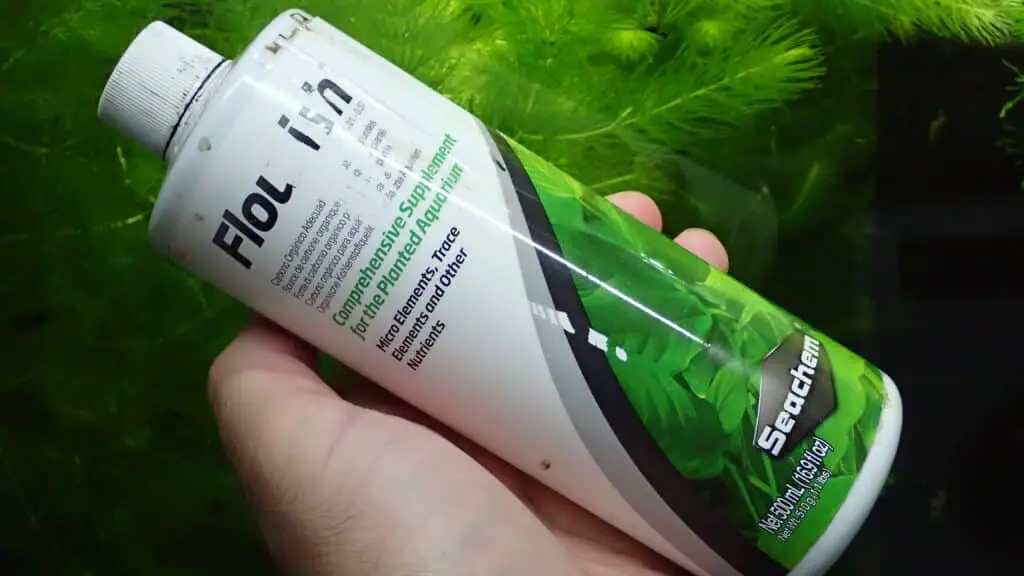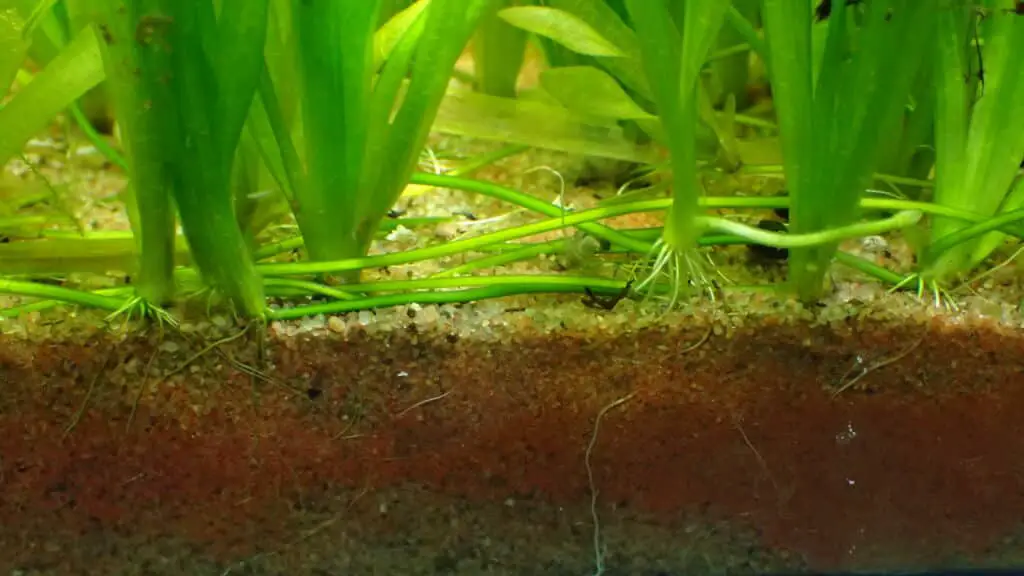Answer Snippet: How to grow Vallisneria? The key to successful growth lies in providing moderate lighting, a nutrient-rich substrate, and maintaining a temperature range of 68-82°F. It’s also important to ensure the plant’s crown is not buried too deep in the substrate.
As an avid aquarist, I’ve had my fair share of challenges when it comes to maintaining a balanced and thriving aquatic environment. One of the most rewarding, yet initially challenging, experiences I’ve had was learning how to grow Vallisneria. This aquatic plant, with its long, ribbon-like leaves, is a beautiful addition to any aquarium, but getting it to thrive took some trial and error.
When I first introduced Vallisneria into my aquarium, I struggled with finding the right balance of light and nutrients. I noticed the leaves were not as vibrant as they should be, and the growth was slower than expected. This was a pain point for me, as I wanted to create a lush, green backdrop for my aquarium inhabitants.
Over the course of several months, I experimented with different lighting conditions, substrate types, and even the depth at which I planted the Vallisneria. I learned that these plants preferred moderate lighting and a nutrient-rich substrate. I also discovered that planting them too deep could cause the plant to rot, a mistake I made early on.
Through this process, I’ve gained a wealth of knowledge and experience in growing Vallisneria. Now, I can proudly say that my aquarium is home to a thriving Vallisneria plant that not only enhances the aesthetic appeal of my tank but also contributes to a healthy environment for my fish and shrimp.
In this guide, I’ll share with you the lessons I’ve learned, the mistakes to avoid , and the best practices for growing Vallisneria. Whether you’re a novice aquarist or a seasoned hobbyist, I hope this guide will provide you with the knowledge and confidence to successfully grow Vallisneria in your own aquarium.
, and the best practices for growing Vallisneria. Whether you’re a novice aquarist or a seasoned hobbyist, I hope this guide will provide you with the knowledge and confidence to successfully grow Vallisneria in your own aquarium.
| Parameter | Value |
|---|---|
| Light | Moderate |
| Temperature | 68-82°F |
| pH | 6.0-8.5 |
| Substrate | Nutrient-rich |
| Growth Rate | Moderate-Fast |
| Tank Size | 10+ gallons |
How to Grow Vallisneria: The Basics
Vallisneria plants are known for their long, ribbon-like leaves that grow from a central rosette. As an aquatic plant, Vallisneria grows submerged in water, making it a perfect addition to any freshwater fish or shrimp tank. The plant’s ability to produce oxygen and absorb excess nutrients benefits the overall health of your aquarium, providing a natural form of filtration.
When growing Vallisneria, consider the plant’s preferred conditions to ensure optimal growth. Vallisneria species generally require moderate lighting, a nutrient-rich substrate, and a temperature range of 68-82°F. The pH should be maintained between 6.0 and 8.5, as this is the ideal range for most Vallisneria species. Aquatic plants like Vallisneria nana, a smaller variety, can be grown in smaller tanks, while larger species may require more space.
To plant Vallisneria, carefully place the plant’s roots into the substrate, ensuring they are well-anchored. Be cautious not to bury the crown, as this can cause the plant to rot. Vallisneria grows quickly, so regular pruning is necessary to keep the plants from becoming too dense.
Propagating Vallisneria is relatively simple, as the plants produce daughter plants via runners. Simply separate the daughter plant from the parent and replant it elsewhere in the tank, ensuring the same care guidelines are followed.

The Importance of Vallisneria in Aquariums
Incorporating Vallisneria plants into your aquarium provides numerous benefits that contribute to a healthy, thriving aquatic environment. Understanding how to grow Vallisneria and the significance of these plants in your fish tank will help you create a balanced and visually appealing ecosystem for your fish and shrimp.
will help you create a balanced and visually appealing ecosystem for your fish and shrimp.
Vallisneria species are well-known for their ability to create a more natural and comfortable environment for fish and shrimp. These aquarium plants offer essential hiding places and serve as a sanctuary for shy or stressed fish, which can result in reduced stress levels and improved overall health.
Aquatic plants like Vallisneria play a crucial role in maintaining water quality, as they help to absorb excess nutrients and produce oxygen through the process of photosynthesis. This not only promotes a healthier fish tank but also supports beneficial bacteria growth, contributing to a stable nitrogen cycle in the aquarium.
Growing Vallisneria can also enhance the visual appeal of your fish tank. The plants’ lush, ribbon-like leaves create a stunning backdrop and add depth to your aquarium’s overall design. Vallisneria species, such as Vallisneria nana, offer a compact and versatile option for smaller tanks, while larger species provide a more dramatic effect in spacious aquariums.

Choosing the Right Vallisneria Plant for Your Tank
Selecting the appropriate Vallisneria plant for your aquarium is a crucial step in creating a balanced and visually appealing aquatic environment. With several Vallisneria species available, each offering unique characteristics and growth habits, it’s essential to understand the differences between them to make an informed decision.
Some of the most popular Vallisneria species include Vallisneria spiralis, Vallisneria gigantea, and Vallisneria nana. Each species has distinct characteristics that can impact the overall appearance and balance of your aquarium.

Plant Substrate and Planting Tips
Properly planting Vallisneria and providing the right substrate are crucial elements for successfully growing these aquatic plants in your fish tank. This guide will offer substrate recommendations and planting tips to ensure your Vallisneria plants thrive and contribute to a healthy, balanced aquarium environment.
Selecting the appropriate substrate is essential for promoting healthy root development and overall growth in Vallisneria plants. These plants prefer a nutrient-rich substrate, as it provides the necessary nutrients for optimal growth. Substrates such as nutrient-dense aquarium soil or those supplemented with root tabs are ideal for Vallisneria species. Additionally, a substrate with a grain size of 2-4 mm is recommended, as it allows for proper root anchorage and prevents the plant from becoming uprooted.

Combating Common Vallisneria Problems
Vallisneria plants are generally hardy, but they can encounter issues such as yellowing leaves, slow growth, or uprooting. Yellowing leaves can be a sign of nutrient deficiency, which can be addressed by adding a nutrient-rich substrate or a suitable aquarium plant fertilizer. Slow growth can be due to inadequate lighting or incorrect water parameters. Ensure your Vallisneria is receiving moderate light and the water temperature is within the range of 68-82°F. If your Vallisneria keeps uprooting, try planting it deeper or using plant weights to keep it anchored.

Conclusion
Vallisneria is a versatile and beneficial addition to any aquarium. Its ability to thrive in various conditions, with its aesthetic appeal and contribution to a healthy aquatic environment, makes it an excellent choice for novice and experienced aquarists. By following the guidelines and expert tips outlined in this article, you can successfully grow and maintain Vallisneria in your aquarium, enhancing its overall health and visual appeal.
If you need further assistance or have questions about growing Vallisneria, please don’t hesitate to reach out. If you can’t reach me here, check out Aquarium Shrimp Keeping on Facebook for more information and community support. Remember, the journey of growing plants can be challenging but is rewarding, and you’re not alone in it.
Happy Shrimp Keeping!
FAQ: All About Vallisneria Growth and Care
Q. How long does Vallisneria take to establish? A. Vallisneria typically takes a few weeks to a couple of months to fully establish in a new aquarium. This can vary based on tank conditions and the plant’s health at the time of introduction.
Q. Can you plant Vallisneria too deep? A. Yes, planting Vallisneria too deep can harm the plant. The crown of the plant should be above the substrate to prevent rot and promote healthy growth.
Q. Does Vallisneria need high light? A. Vallisneria can thrive in moderate lighting conditions. While it can tolerate lower light levels, providing sufficient light promotes optimal growth.
Q. Is Vallisneria easy to grow? A. Yes, Vallisneria is considered an easy-to-grow aquatic plant. It’s adaptable to a variety of water conditions, making it a good choice for beginners.I have noticed that the growth of Vallisneria varies in different tanks. In some of them, it grows short, while in others, it grows long.

4 thoughts on “How to grow Vallisneria?”